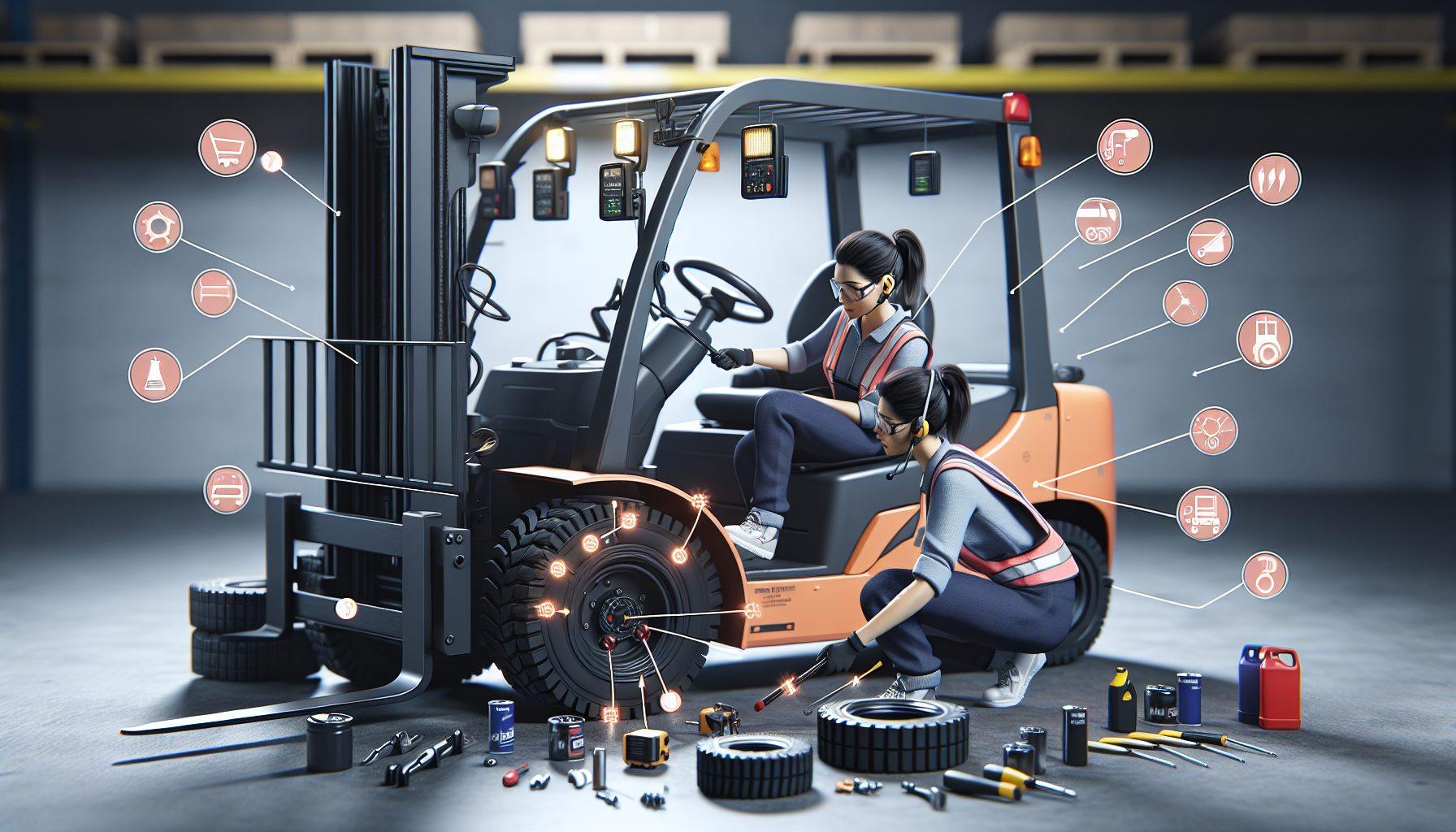In the fast-paced world of warehouse operations, forklifts play a crucial role in moving goods efficiently and safely. However, like any other machinery, forklifts are prone to wear and tear, which can lead to breakdowns and disruptions in warehouse operations. That’s why regular maintenance checks are essential to keep forklifts operating at their best. In this article, we will guide you on how to conduct a thorough forklift maintenance check to ensure optimal performance and minimize downtime.
1. Visual Inspection
Before starting your forklift maintenance check, it’s important to perform a visual inspection of the entire machine. Look for any signs of damage or obvious issues such as leaks, loose bolts, or worn-out tires. Pay special attention to critical components such as forks, mast, chains, and wheels. If you notice any issues during the visual inspection, address them immediately before proceeding with the maintenance check.
2. Fluid Levels
Next, check the fluid levels of your forklift. This includes engine oil, transmission fluid, coolant, and hydraulic fluid. Ensure that they are at the correct levels and topped up if necessary. Low fluid levels can cause unnecessary strain on the forklift’s components and lead to equipment failure. Refer to the forklift manufacturer’s specifications for the appropriate fluid levels and types.
3. Battery Maintenance
Proper battery maintenance is crucial for electric forklifts. Start by checking the battery connections to ensure they are tight and free from corrosion. Clean any corrosion present using a mixture of baking soda and water. Check the water level in the battery cells and add distilled water if needed. It’s also important to monitor the battery’s overall health by performing regular load tests. Consider implementing a battery maintenance program to ensure optimal performance and extend the battery’s lifespan.
4. Tire Inspection
Tires are an essential component of any forklift as they provide stability and traction. Inspect the tires for any signs of wear, punctures, or embedded debris. Check the tire pressure and adjust it to the manufacturer’s recommended specifications. Properly inflated tires will help maintain stability and reduce the risk of accidents. If you notice excessive wear or damage, it’s important to replace the tires promptly to maintain safe operations.
5. Brakes and Lights
Functional brakes and lights are crucial for the safety of forklift operators and those working in the warehouse. Test the brakes to ensure they are responsive and functioning correctly. Check the brake fluid levels and ensure there are no leaks. Inspect all lights, including headlights, taillights, and blinkers, to ensure they are working properly. Replace any bulbs that are burnt out or dim. Address any issues with the brakes or lights immediately to eliminate potential hazards.
6. Lifting Mechanism Inspection
The lifting mechanism of a forklift, including the forks and mast, must be in optimal condition to handle heavy loads safely. Inspect the forks for any signs of damage or wear, such as cracks or bends. Ensure they are correctly aligned and securely attached to the lift carriage. Lubricate the mast chains and check for any signs of wear or damage. It’s important to address any issues with the lifting mechanism promptly to prevent accidents or equipment failure.
7. Operator’s Controls
Lastly, test all the operator’s controls to ensure they are functioning correctly. Check the steering, accelerator, and brake pedals for smooth operation. Test the horn, backup alarm, and other safety features to ensure they are working properly. If any controls are not functioning as they should, they should be repaired or replaced promptly to maintain the safety and efficiency of the forklift.
Remember that regular forklift maintenance checks are essential for both the longevity of the equipment and the safety of everyone in the warehouse. By following these steps and addressing any issues promptly, you can minimize downtime, reduce the risk of accidents, and optimize the performance of your forklift fleet.
For comprehensive forklift maintenance solutions, check out HCO Innovations’ turnkey forklift maintenance solutions. They specialize in enhancing safety, productivity, efficiency, and cost-effectiveness within warehouse operations. Visit their website to learn more about their services.

